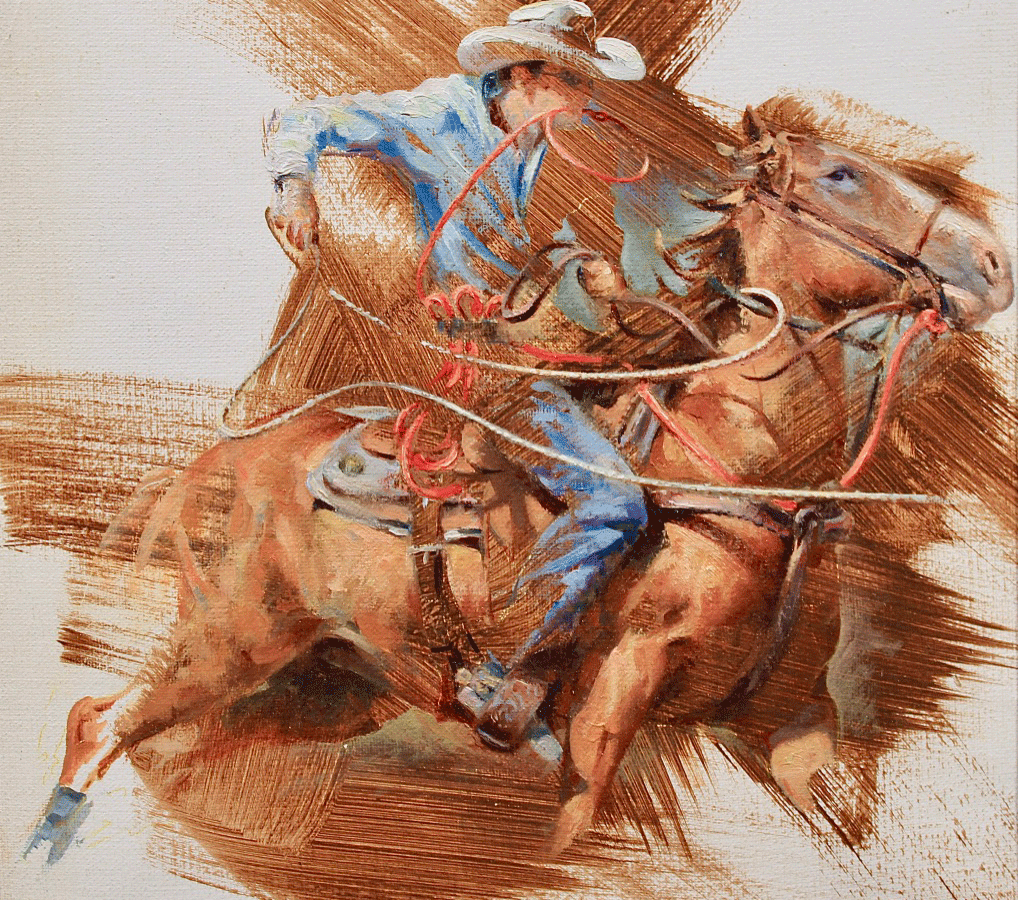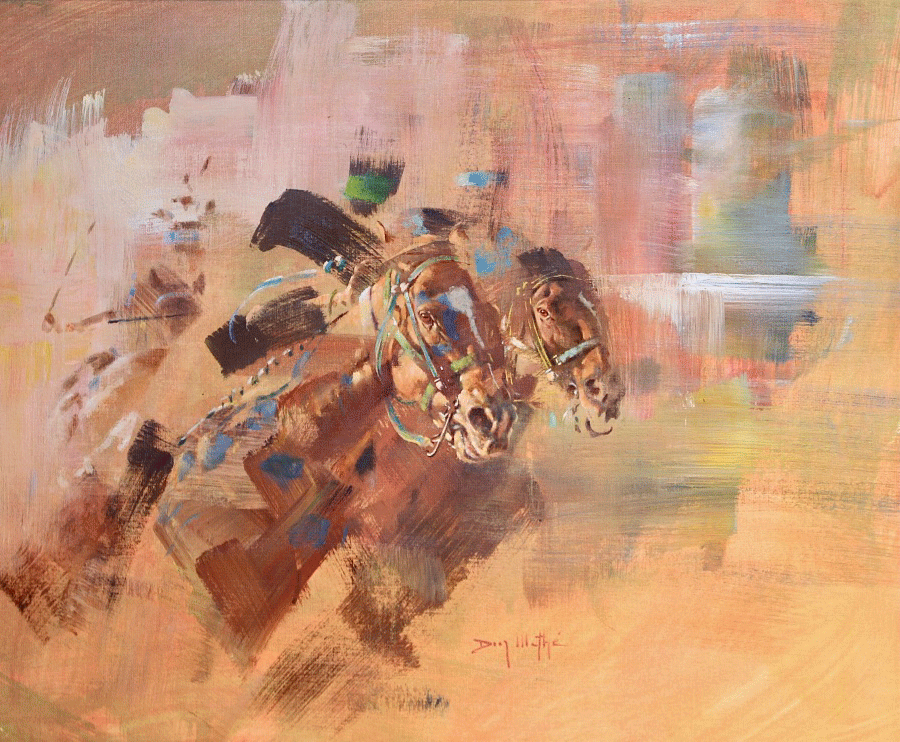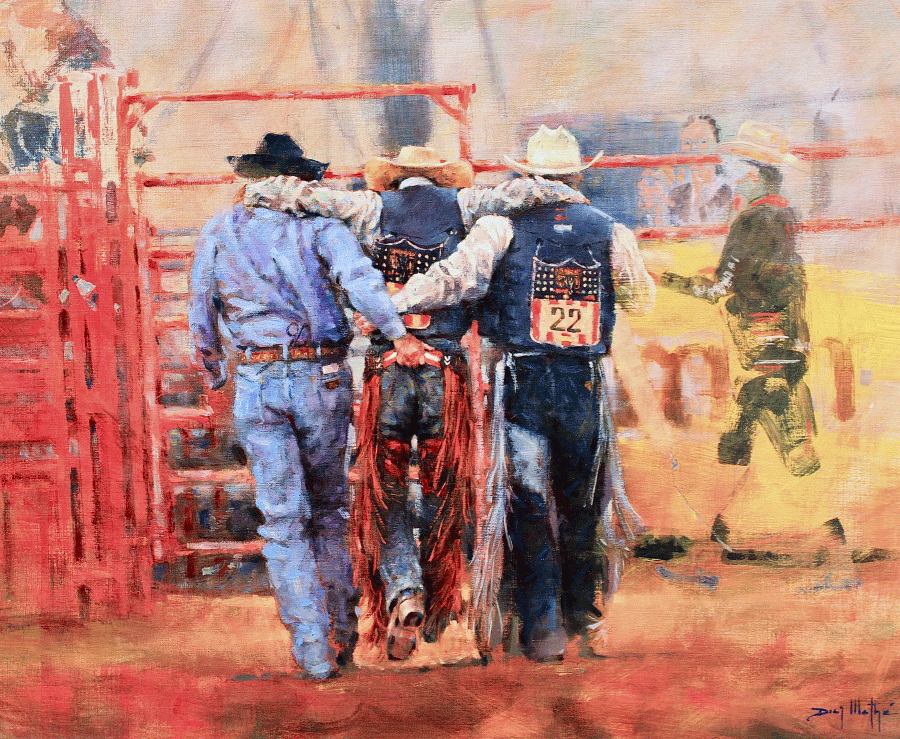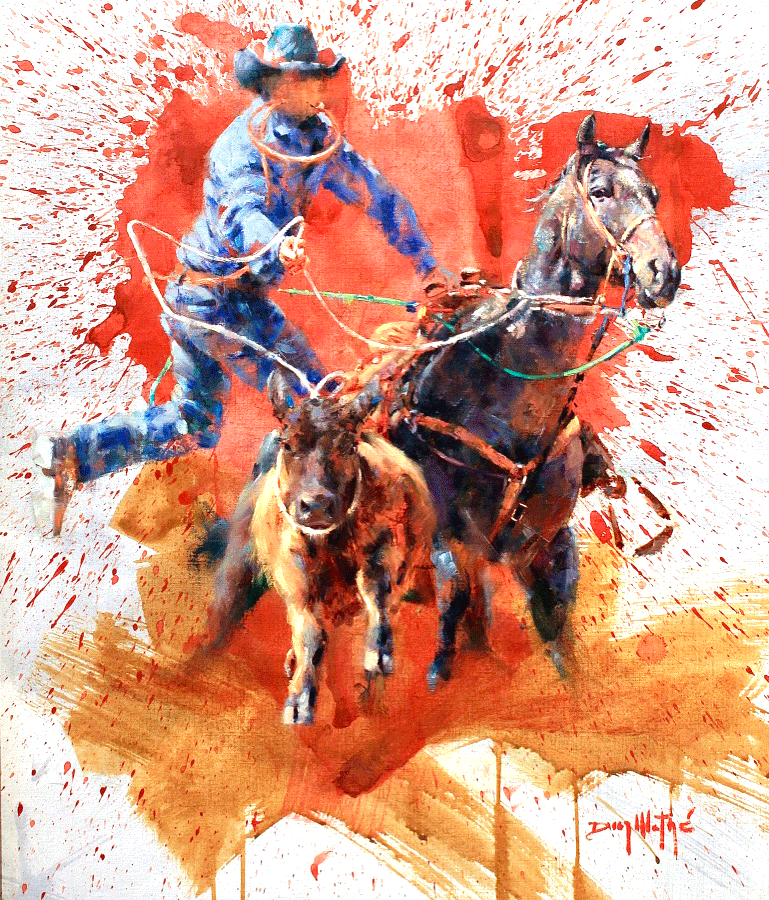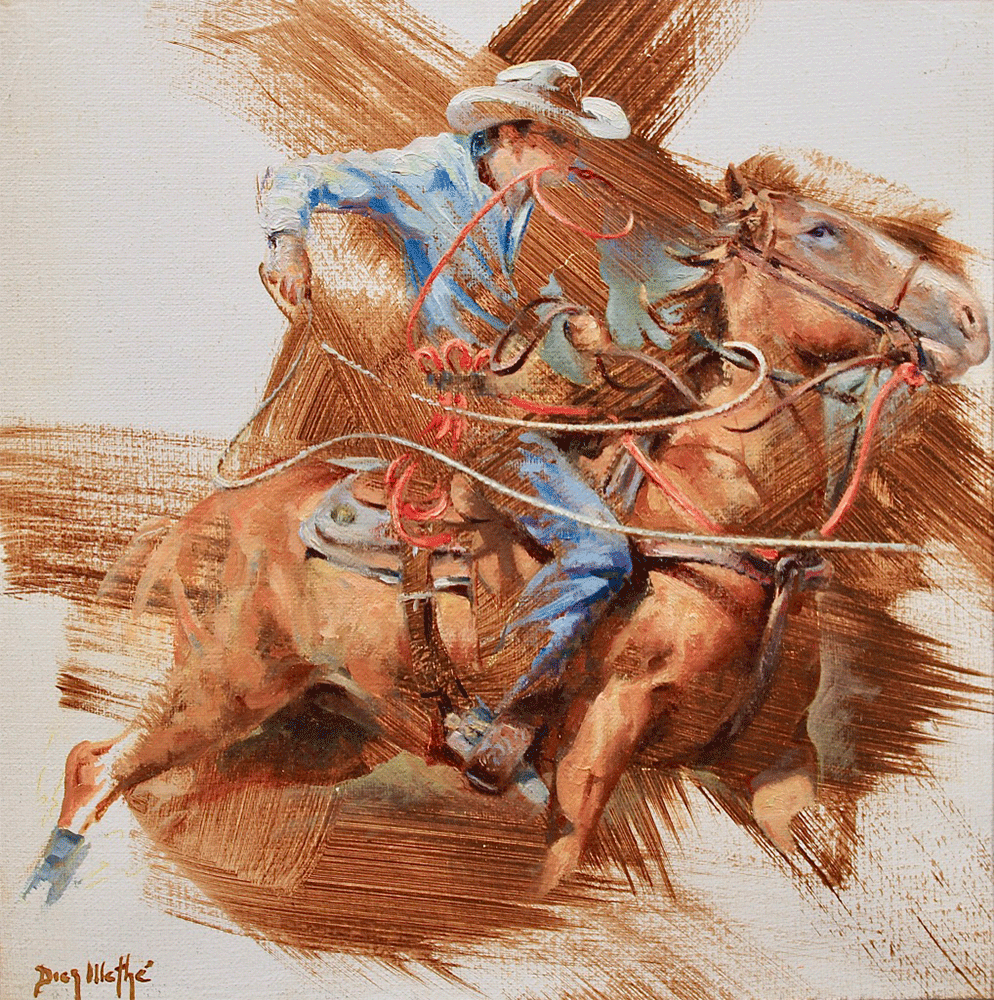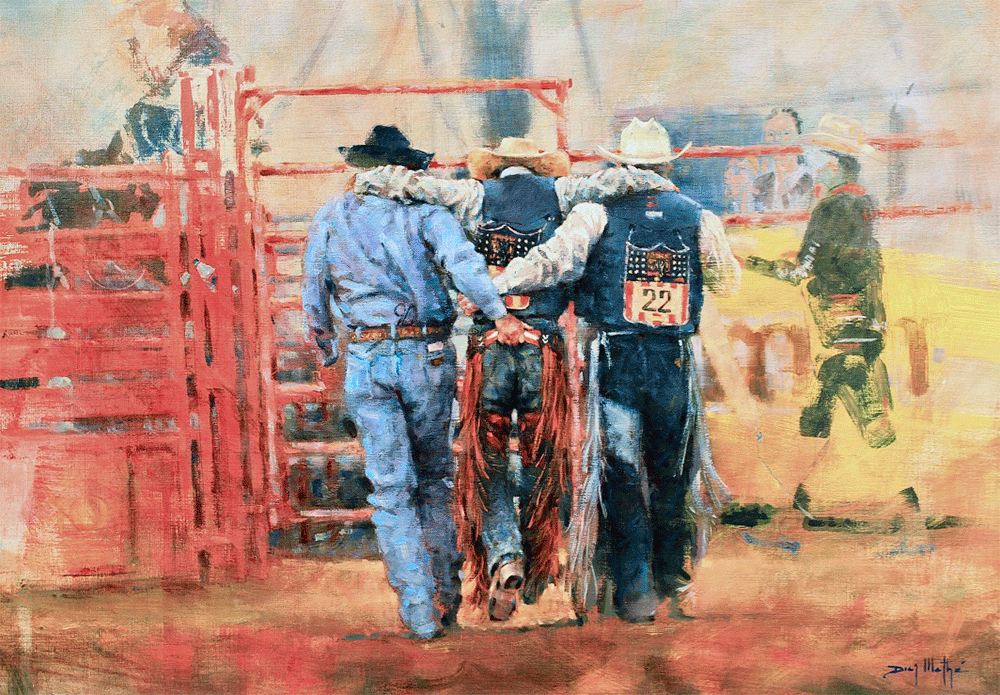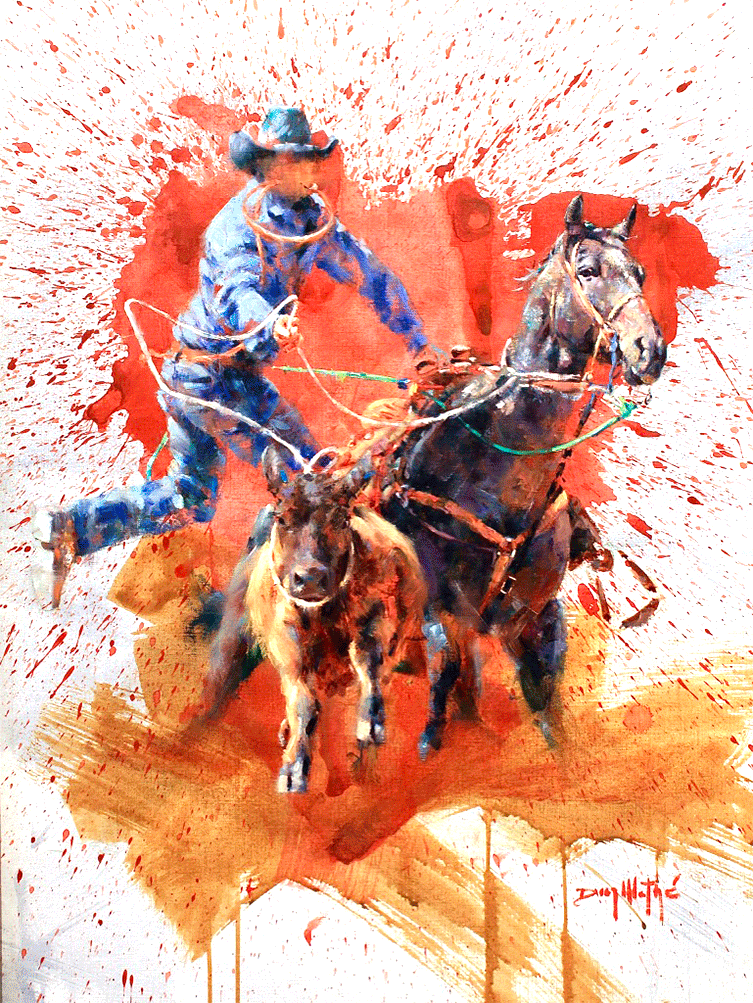Esteban Diaz Mathe
A native of Buenos Aires, Esteban Diaz Mathé received a university education becoming a licensed psychologist specializing in corporate Human Resources and began a second career in Architecture.
Despite his success, he could not leave his creative side unfulfilled. He abandoned the comfort of the corporate world to pursue his artistic career full time. With absolutely no formal training, Diaz Mathé independently studied the great old masters: da Vinci, Caravaggio, Michelangelo and Rembrandt. He learned how to capture light, visages, flora and fauna with exceptional ease. An extraordinary draftsman, he began to work in graphite, pen, charcoal and oil. He devoted himself to capturing the spirit of his native country.
Diaz Mathé was the guest of numerous large estancias within Argentina and expanded to Brasil and Chile. Spending lengthy periods at each estancia, he worked and rode with the gauchos, ranch hands and farriers for weeks at a time. With great zeal, Diaz Mathé photographed and sketched everything he witnessed and experienced, capturing the atmosphere and the daily life of the gauchos in the Argentine outback.
While growing up, Esteban returned to the family estancia during summer and winter vacations. He enjoyed hunting and fly-fishing in Patagonia and recollects that his first love was the gauchos and their horses. ¨To me they were a dream, they were my friends and my father-figures. At dawn each day they would call for me with a horse and I would ride with them all day”.
Gathering information, investigating and sharing his daily work with rural people, Diaz Mathé sought to capture through his paintings the very essence of the national being”. In 2012, Esteban published and edited his first book of artworks: Ser Argentino (Being Argentine). The Argentine Ministry of Foreign Affairs distributed copies of Ser Argentino to its 80 embassies around the world; and three thousand copies were sold to Buenos Aires banks and businesses. He was awarded the Congressional Honor Award in Arts for his book and it became the standard gift from Argentine Congress to all international dignitaries that visit Argentina; presidents, diplomats and key international business representatives.
Soon after Esteban published Ser Argentino he and his art came to the attention of Marcos Uranga, the well-respected former president of the Argentine Polo Association and the founder and first president of Federation of International Polo (FIP). Thanks to Uranga and others, Esteban built up a great worldwide art career in the polo world, developing and renewing friendships and gaining the support of such prominent polo families such as Pieres, MacDonough and Novillo-Astrada. These relationships led to an invitation to spend the summer in Wyoming at the Flying H, and his artistic focus turned to the American West. Esteban recalls his host saying, “Visit my ranch. Explore and live our west!”. “The similarities between Gauchos and Cowboys were fascinating, and I got the sense of the common way of how they think and talk, both externally and internally – they are men of the land, men of horses and cattle who are the same people worldwide because it is nature who sculpted their spirit.”
During the summer of 2019, 29 pieces of art, “Gauchos, Cowboys, and Polo” were shown at the Bradford Brinton Museum in Big Horn, WY. Esteban stated, “A whole new chapter in my career just began, and I hope and desire to keep visiting the American West. I will do my best to provide a tribute to the people and the culture with my art and my soul. This is a point of no return!”
Despite his success, he could not leave his creative side unfulfilled. He abandoned the comfort of the corporate world to pursue his artistic career full time. With absolutely no formal training, Diaz Mathé independently studied the great old masters: da Vinci, Caravaggio, Michelangelo and Rembrandt. He learned how to capture light, visages, flora and fauna with exceptional ease. An extraordinary draftsman, he began to work in graphite, pen, charcoal and oil. He devoted himself to capturing the spirit of his native country.
Diaz Mathé was the guest of numerous large estancias within Argentina and expanded to Brasil and Chile. Spending lengthy periods at each estancia, he worked and rode with the gauchos, ranch hands and farriers for weeks at a time. With great zeal, Diaz Mathé photographed and sketched everything he witnessed and experienced, capturing the atmosphere and the daily life of the gauchos in the Argentine outback.
While growing up, Esteban returned to the family estancia during summer and winter vacations. He enjoyed hunting and fly-fishing in Patagonia and recollects that his first love was the gauchos and their horses. ¨To me they were a dream, they were my friends and my father-figures. At dawn each day they would call for me with a horse and I would ride with them all day”.
Gathering information, investigating and sharing his daily work with rural people, Diaz Mathé sought to capture through his paintings the very essence of the national being”. In 2012, Esteban published and edited his first book of artworks: Ser Argentino (Being Argentine). The Argentine Ministry of Foreign Affairs distributed copies of Ser Argentino to its 80 embassies around the world; and three thousand copies were sold to Buenos Aires banks and businesses. He was awarded the Congressional Honor Award in Arts for his book and it became the standard gift from Argentine Congress to all international dignitaries that visit Argentina; presidents, diplomats and key international business representatives.
Soon after Esteban published Ser Argentino he and his art came to the attention of Marcos Uranga, the well-respected former president of the Argentine Polo Association and the founder and first president of Federation of International Polo (FIP). Thanks to Uranga and others, Esteban built up a great worldwide art career in the polo world, developing and renewing friendships and gaining the support of such prominent polo families such as Pieres, MacDonough and Novillo-Astrada. These relationships led to an invitation to spend the summer in Wyoming at the Flying H, and his artistic focus turned to the American West. Esteban recalls his host saying, “Visit my ranch. Explore and live our west!”. “The similarities between Gauchos and Cowboys were fascinating, and I got the sense of the common way of how they think and talk, both externally and internally – they are men of the land, men of horses and cattle who are the same people worldwide because it is nature who sculpted their spirit.”
During the summer of 2019, 29 pieces of art, “Gauchos, Cowboys, and Polo” were shown at the Bradford Brinton Museum in Big Horn, WY. Esteban stated, “A whole new chapter in my career just began, and I hope and desire to keep visiting the American West. I will do my best to provide a tribute to the people and the culture with my art and my soul. This is a point of no return!”

LOOKING FOR A SPECIFIC PIECE?
We would be pleased to assist you in locating a western artist or Indian piece that you are particularly interested in. Contact us today to begin the search for your next piece.
CONTACT THE GALLERY







